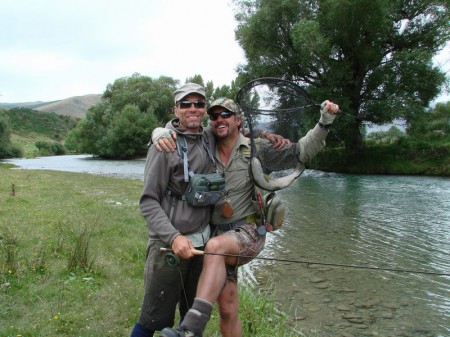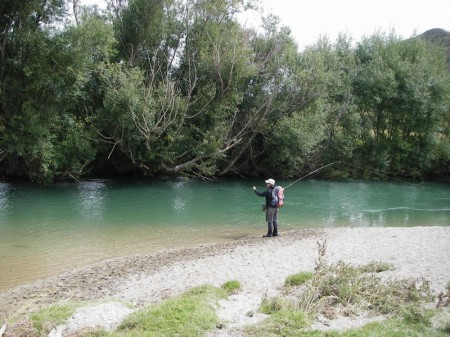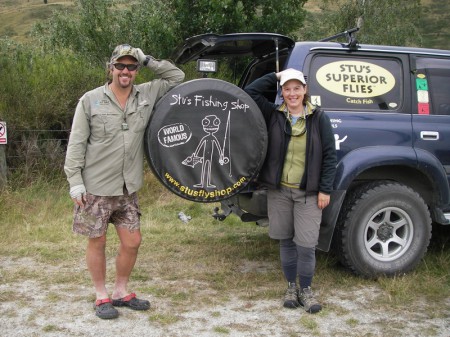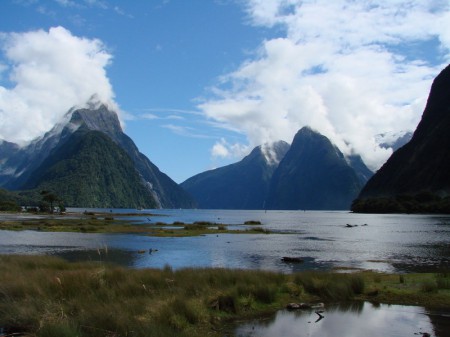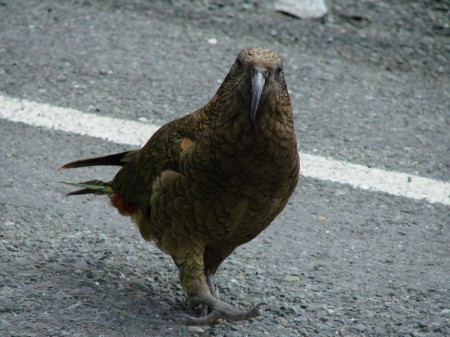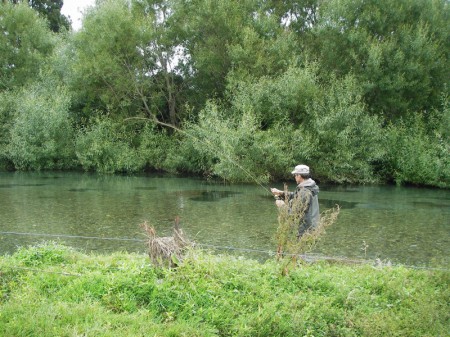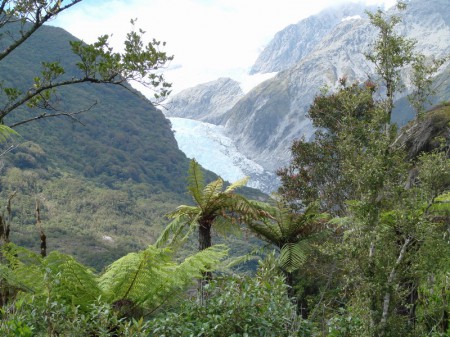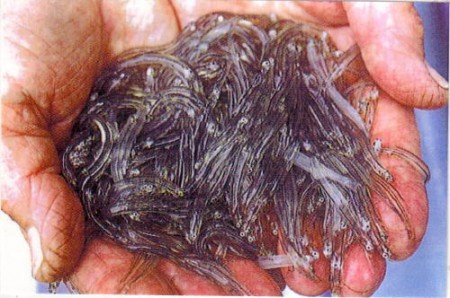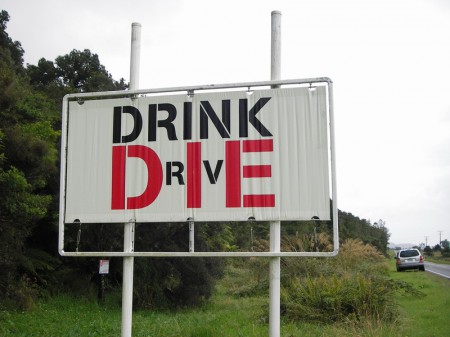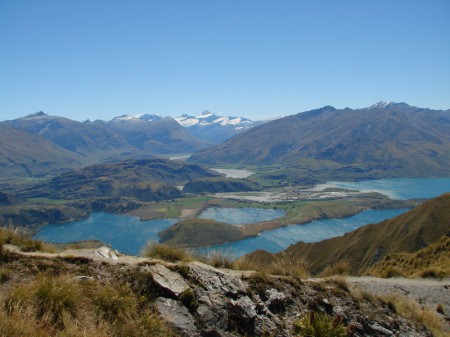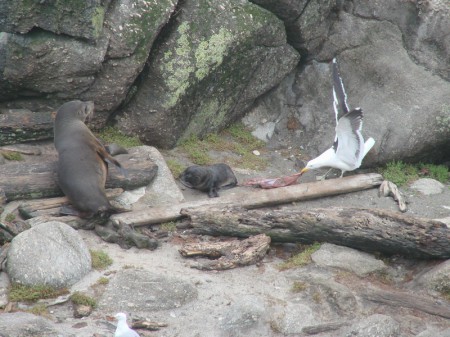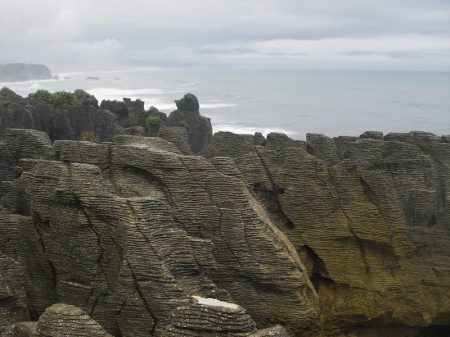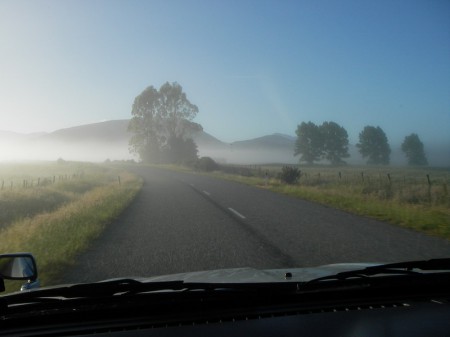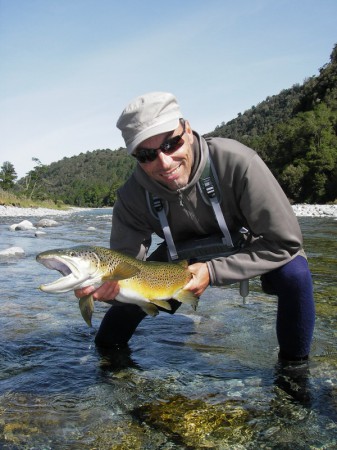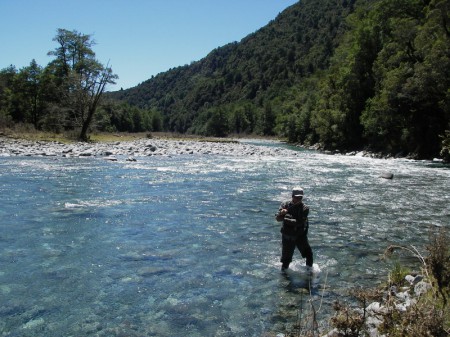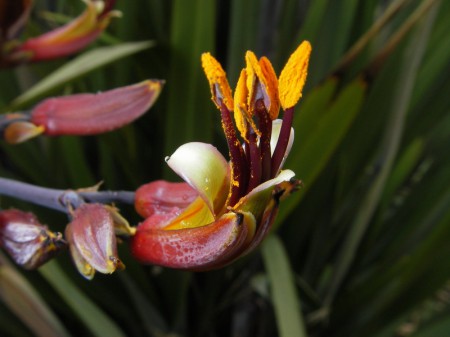Brown trout territory
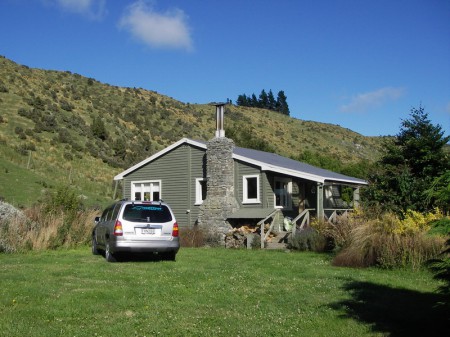 Mossburn, close to some of the best known brown trout rivers in New Zealand like the Oreti and the Mataura, is our next destination. The cottage we found trough the AA guide proves to be even cosier then expected and we fall in love with it at first sight; a perfect base for our trips to the surrounding rivers.
Mossburn, close to some of the best known brown trout rivers in New Zealand like the Oreti and the Mataura, is our next destination. The cottage we found trough the AA guide proves to be even cosier then expected and we fall in love with it at first sight; a perfect base for our trips to the surrounding rivers.
As avid readers of Flylife magazine, we noticed Stu Tripney years ago, a Scotsman who made NZ and Athol his new home. He seemed to be a bit crazy, a very good and passionate fly fisher and fly tier and a pretty decent bloke. Stu’s fly patterns are already well known in NZ and Australia and the choice is impressive. www.stusflyshop.com
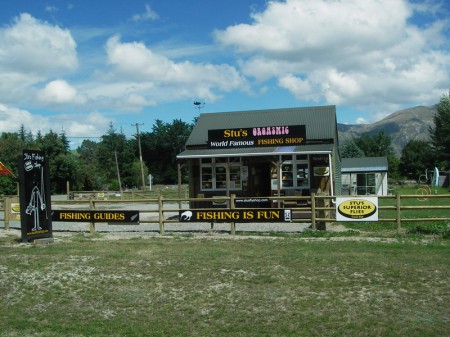 When meeting Stu in person at his well stocked tackle shop in Athol, we are greeted by a friendly guy with a smile and a great sense of humor. Stu and his dad George are a real handful and we have sore tummy muscles from all the good laughs we have in their company. Later in the week Stu is guiding us on the Mataura. The water has just cleared enough to be fishable with a dry fly and despite the poor visibility our guide points out many fish; to our embarrassment we miss most of them. But, as Stu assures us, we have not broken the record for missed fish – we are very close though. We have an unforgettable day in great company and learn a lot and yes, some of us get wet balls as well. Thanks for all Stu and George, we hope to see you again happy and healthy!
When meeting Stu in person at his well stocked tackle shop in Athol, we are greeted by a friendly guy with a smile and a great sense of humor. Stu and his dad George are a real handful and we have sore tummy muscles from all the good laughs we have in their company. Later in the week Stu is guiding us on the Mataura. The water has just cleared enough to be fishable with a dry fly and despite the poor visibility our guide points out many fish; to our embarrassment we miss most of them. But, as Stu assures us, we have not broken the record for missed fish – we are very close though. We have an unforgettable day in great company and learn a lot and yes, some of us get wet balls as well. Thanks for all Stu and George, we hope to see you again happy and healthy!
When travelling in New Zealand, one will come across possums sooner or later; the most likely encounter being road kill. The Australian brush tailed possum was introduced into NZ in the early 19th century to establish a fur trade. A lack of natural predators and bush fires and the abundance of food resulted in an explosion of the population and possums became a serious threat for many native plants and animals. The cute marsupial from OZ proofs to be a real nuisance and the Department of Conservation is doing everything possible to reduce its numbers and the impact possums have on the environment.
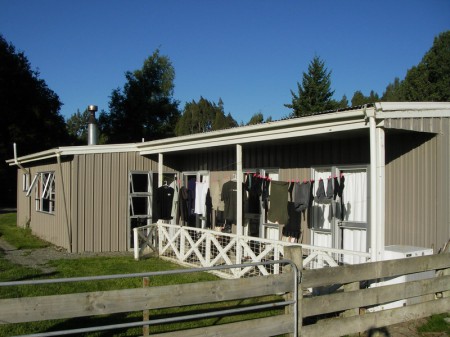 A trip to New Zealand is not complete without having been in Fiordland. We do not have to travel far from Mossburn and our next choice of accommodation proves to be a true winner. Finding a place to stay in Te Anau in high season is difficult and the only options are very expensive. After searching the internet for a while, we come across Mt Prospect Station, a mere 20 minutes from town. As it turnes out, it is the best thing that could have happened. We spend the next two weeks in the stations shearers’ quarters just a stone’s throw from the Whitestone River and with impressive Mt Prospect right behind the house. The quarters provide all we need for a very enjoyable stay indeed. Mt Prospect website
A trip to New Zealand is not complete without having been in Fiordland. We do not have to travel far from Mossburn and our next choice of accommodation proves to be a true winner. Finding a place to stay in Te Anau in high season is difficult and the only options are very expensive. After searching the internet for a while, we come across Mt Prospect Station, a mere 20 minutes from town. As it turnes out, it is the best thing that could have happened. We spend the next two weeks in the stations shearers’ quarters just a stone’s throw from the Whitestone River and with impressive Mt Prospect right behind the house. The quarters provide all we need for a very enjoyable stay indeed. Mt Prospect website
The fishing in the Whitestone River is outstanding and we have a ball catching Brown and Rainbow trout on dry flies. Lacking the pressure of Stu’s presence or more likely his positive impact, we get the timing right and hook-ups become common again. As always, we fish barbless and notice once more that very few fish are lost as a result of a missing barb. We spend many days on the Whitestone and neighboring rivers, enjoy our riverside lunches in the most scenic places and love the great feeling of being tired after a long day out on the water.
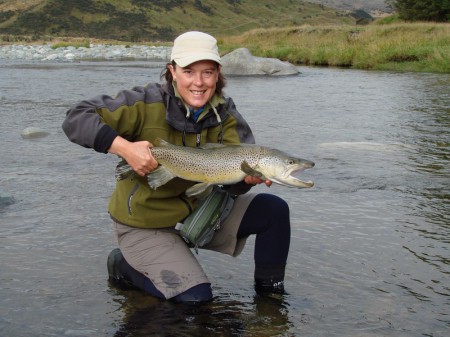 One memorable morning Béatrice spots a fish minutes after we have reached the river; the big Brown sitting in knee deep water in front of a rock. Her first cast is spot on, the fish does not hesitate and slowly pushes its large head with the jaws wide open out of the water and over the fly. And then all hell breakes loose! Feeling the sting of the hook, the trout zigzagges up and down the pool and jumpes high into the clear morning air several times. Bugger! The fish looks huge out of the water and I doubt that Béatrice will be able to land it. But after several minutes of good rod work the fish gives in and she lands a beauty of a Brown trout jack, the scales of the weight net showing just over 7lbs.
One memorable morning Béatrice spots a fish minutes after we have reached the river; the big Brown sitting in knee deep water in front of a rock. Her first cast is spot on, the fish does not hesitate and slowly pushes its large head with the jaws wide open out of the water and over the fly. And then all hell breakes loose! Feeling the sting of the hook, the trout zigzagges up and down the pool and jumpes high into the clear morning air several times. Bugger! The fish looks huge out of the water and I doubt that Béatrice will be able to land it. But after several minutes of good rod work the fish gives in and she lands a beauty of a Brown trout jack, the scales of the weight net showing just over 7lbs.
And we visit Milford Sound again of course. The drive to the sound alone is well worth doing, such diverse are the landscape and the natural features along the way. Watch out for Keas, when waiting for the green light in front of Homer tunnel. The cheeky mountain parrots seem to love the attention of people and they definitely love to play.
Rachel, Grant and Ellie, the young couple and their daughter owning the farm and our very friendly hosts, give us an interesting insight into a working back country station and make our stay become home away from home indeed. Many thanks to Peter and Sandy as well! We miss you, guys.
While staying on Mt Prospect Station, the second earthquake occurred in Christchurch; we were shocked and very sad when we heard the terrible news. Knowing the city and the places we saw in the news very well, we felt close with all the people affected by the catastrophe. Let’s just hope the worst is over now.
